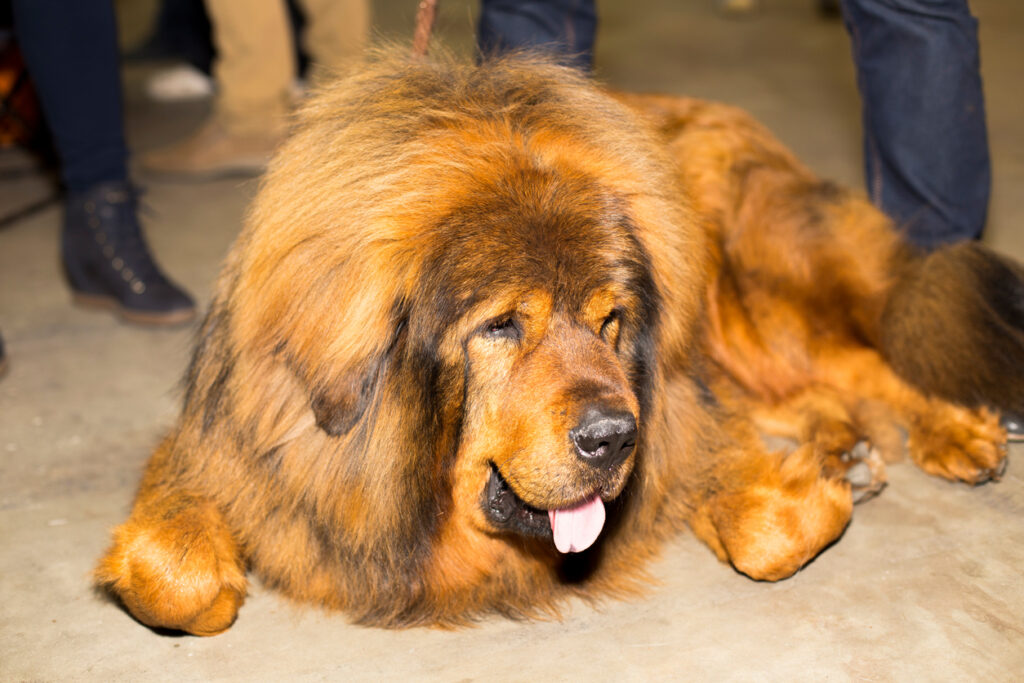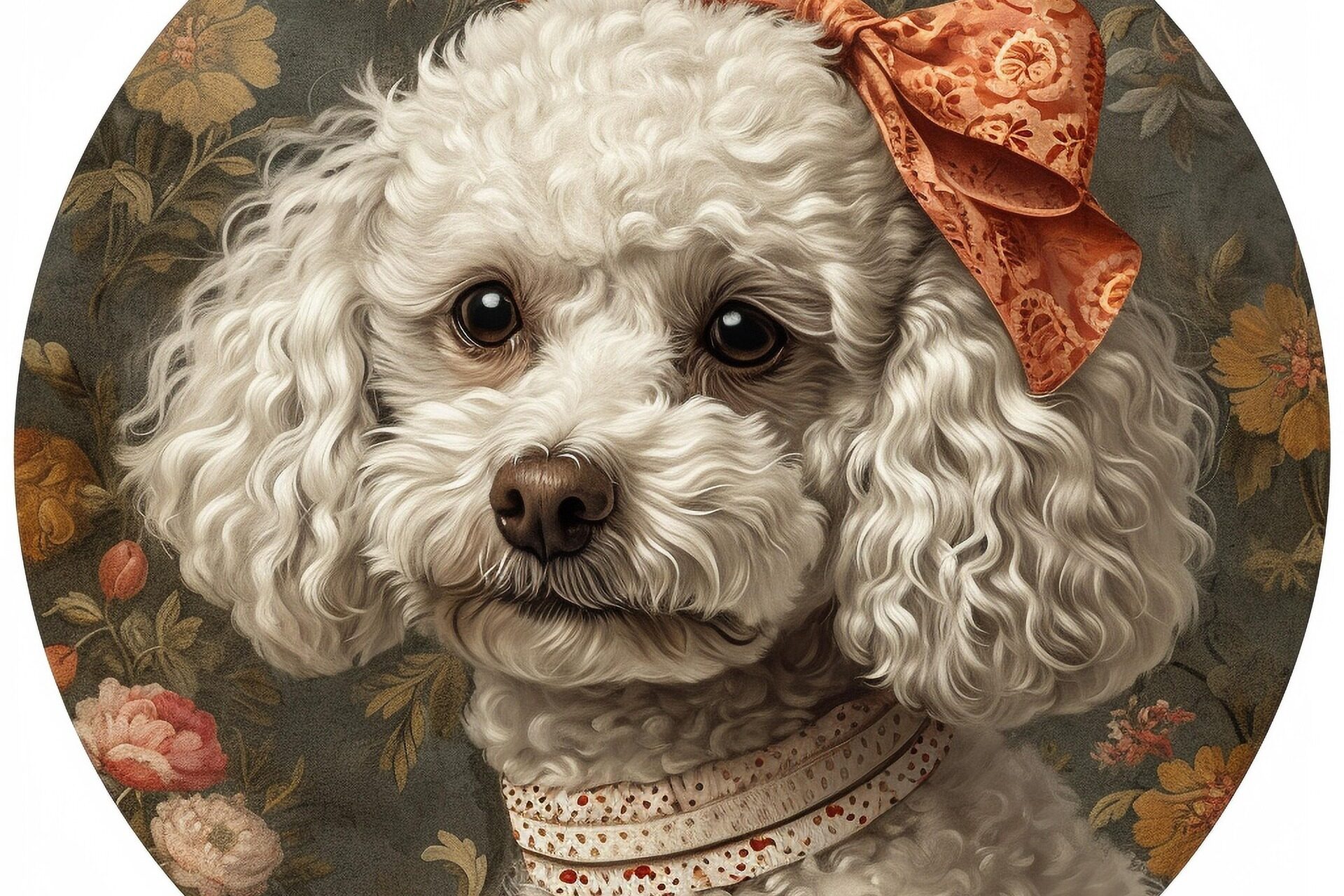1. The $1.5 Million Tibetan Mastiff That Looked Like a Lion

Imagine walking down the street with a dog so enormous and regal that people mistake it for an actual lion. That was the case with Big Splash, a golden-haired Tibetan Mastiff that fetched a jaw-dropping $1.5 million from a Chinese businessman in 2011. Known for their thick, lion-like manes and massive build, Tibetan Mastiffs were once the prized guardians of monks and nomads in the Himalayan mountains. But in China, they became a symbol of wealth, with some breeders marketing them as “pure” descendants of ancient mastiffs—adding a mythical allure to their already imposing presence. Big Splash was said to have a flawless pedigree, making him not just a pet but an investment in prestige. The buyer, whose identity was never revealed, reportedly spared no expense in caring for his million-dollar pup, ensuring he was fed a diet of exotic meats and lived in ultimate luxury.
While Big Splash may have looked like royalty, he was not a pet for the faint-hearted. Tibetan Mastiffs are known for their independent and sometimes stubborn nature, requiring experienced owners who can handle their territorial instincts. They also need ample space—something not easily accommodated in urban environments. Despite their status symbol appeal, the Tibetan Mastiff craze in China eventually faded, with prices dropping dramatically. Some dogs that once sold for hundreds of thousands were later abandoned when the trend cooled. But for a brief moment in history, Big Splash reigned as the most expensive dog in the world, proving that in the right market, even a furry companion could be worth more than a luxury car.
2. A $2 Million Dog That Came With a Private Jet

If you think flying first-class is a luxury, imagine being a dog that gets its own private jet. That was the reality for yet another record-breaking Tibetan Mastiff, a fiery-red pup that sold for nearly $2 million at a luxury pet fair in China. The buyer, a wealthy property developer, was so taken with the dog’s thick, flame-colored coat and perfect proportions that he didn’t hesitate to shell out the extravagant sum. Tibetan Mastiffs, once considered mere working dogs, had become the ultimate status pets in China, with breeders hyping them as “living luxury items.” Their rarity and ancient lineage made them prime candidates for outrageous price tags, and this particular dog, with its striking red fur, was marketed as a “priceless treasure.” The breeder even claimed it had “lion’s blood” in its ancestry, a dubious but effective sales tactic.
Owning a million-dollar dog isn’t just about the bragging rights—it’s also about the costs that come after the purchase. This particular Mastiff reportedly traveled in a private jet and dined on a diet of top-grade beef, chicken, and abalone. But while the idea of a jet-setting dog may sound glamorous, the practicalities of owning such a massive breed are far from simple. Tibetan Mastiffs require extensive training, socialization, and secure environments to thrive. As the trend for these dogs declined, many of them ended up in shelters or were sold at dramatically lower prices. While this $2 million pup may have lived a life of luxury, its story highlights the unpredictable nature of pet trends—and how quickly a million-dollar price tag can turn into a cautionary tale.
3. The Cloned Dog That Cost More Than a Sports Car

Losing a pet is heartbreaking, but what if you could bring them back? That’s exactly what Edgar and Nina Otto, a wealthy Florida couple, did when they paid $155,000 to clone their beloved Labrador Retriever, Sir Lancelot. Their dog had been a cherished part of their family, and when he passed away, they couldn’t bear the thought of never seeing him again. So, they turned to South Korea’s Sooam Biotech Research Foundation, a company that specializes in cloning dogs for those willing to pay the price. Using DNA from the original Sir Lancelot, scientists created a genetic twin—aptly named Sir Lancelot Encore—who was born in 2009. It was the first commercially cloned dog in the world, marking a new era in pet ownership where money could, in a way, buy immortality.
Cloning a pet may sound like something out of a sci-fi movie, but it comes with ethical and scientific questions. While the cloned dog shared the same DNA as the original, its personality and experiences were bound to be different. Scientists argue that cloning cannot perfectly replicate an animal’s behavior or soul, leading to debates over whether the practice is truly beneficial. However, that didn’t stop other wealthy pet owners from following suit. Since Sir Lancelot Encore, dozens of dogs have been cloned for high-profile clients, with some paying upwards of $50,000 to have their beloved pets “reborn.” For those who can afford it, cloning offers the ultimate luxury: never having to say goodbye. But whether or not a clone can truly replace a lost pet remains a question only its owner can answer.
4. The Diamond Collar Poodle That Wore a Fortune

Most people think of Poodles as the epitome of elegance, but one particularly pampered pup took luxury to an entirely new level—by wearing a diamond-studded collar worth more than most people’s homes. Meet Bella, a miniature Poodle owned by a European heiress who believed that no price was too high when it came to accessorizing her beloved pet. While Bella herself may have been worth only a few thousand dollars, her $3.2 million diamond collar turned her into one of the most expensive dogs in history. This extravagant piece of canine jewelry, custom-made by a high-end luxury brand, featured over 1,600 hand-set diamonds, platinum embellishments, and even a rare pink diamond centerpiece. It wasn’t just a collar—it was a masterpiece. The heiress, who preferred to stay anonymous, reportedly traveled with a full-time security team to ensure Bella and her dazzling accessories remained safe.
Of course, the irony of a dog wearing a multi-million-dollar collar wasn’t lost on the world. Critics called it “the most ridiculous display of wealth ever,” while dog lovers couldn’t help but wonder if Bella even cared about the sparkle around her neck. But for her owner, it wasn’t just about the diamonds—it was about status. In her mind, Bella deserved nothing but the best, and that meant luxury that rivaled human royalty. The Poodle was often spotted at elite galas and exclusive events, sitting primly on a velvet throne beside her owner. While other dogs chewed on bones, Bella’s toys were rumored to be made of gold-plated leather and stuffed with cashmere. Whether this was the ultimate expression of love or simply an absurd indulgence, one thing was clear: Bella wasn’t just a pet—she was a walking, barking, jewel-encrusted fortune.
5. The Racing Greyhound That Made Millions

Some dogs cost a million dollars. Others earn it. And one particular Greyhound, known as Brett Lee, ran his way into a fortune. Unlike luxury lapdogs or show ponies disguised as pets, Lee’s wasn’t bred for status—he was bred for speed. With a sleek, muscular build and the kind of aerodynamic physique that left competitors in the dust, Lee became the Michael Jordan of the Greyhound racing world. He was purchased for a modest sum as a young pup, but by the time he hit his prime, his owner was rejecting offers of over $1.3 million from investors eager to cash in on his speed. And for good reason—Lee wasn’t just winning races; he was dominating them.
Lee set track records across multiple circuits, raking in hundreds of thousands in prize money. But his true value wasn’t just in what he could earn on the track—it was in what he could pass down. Breeders saw Lee as a genetic goldmine, willing to pay obscene amounts for the chance to have his offspring continue his winning streak. Stud fees for the champion Greyhound skyrocketed, bringing in nearly $50,000 per litter, making him a million-dollar dog in every sense of the word. Despite his fame, Lee remained blissfully unaware of his worth—spending his free time lounging on silk cushions and enjoying the occasional steak dinner, courtesy of his doting owner. While most million-dollar dogs get their price tag based on rarity or aesthetics, Lee proved that sometimes, raw talent is enough to turn a four-legged racer into a multi-million-dollar legend.


